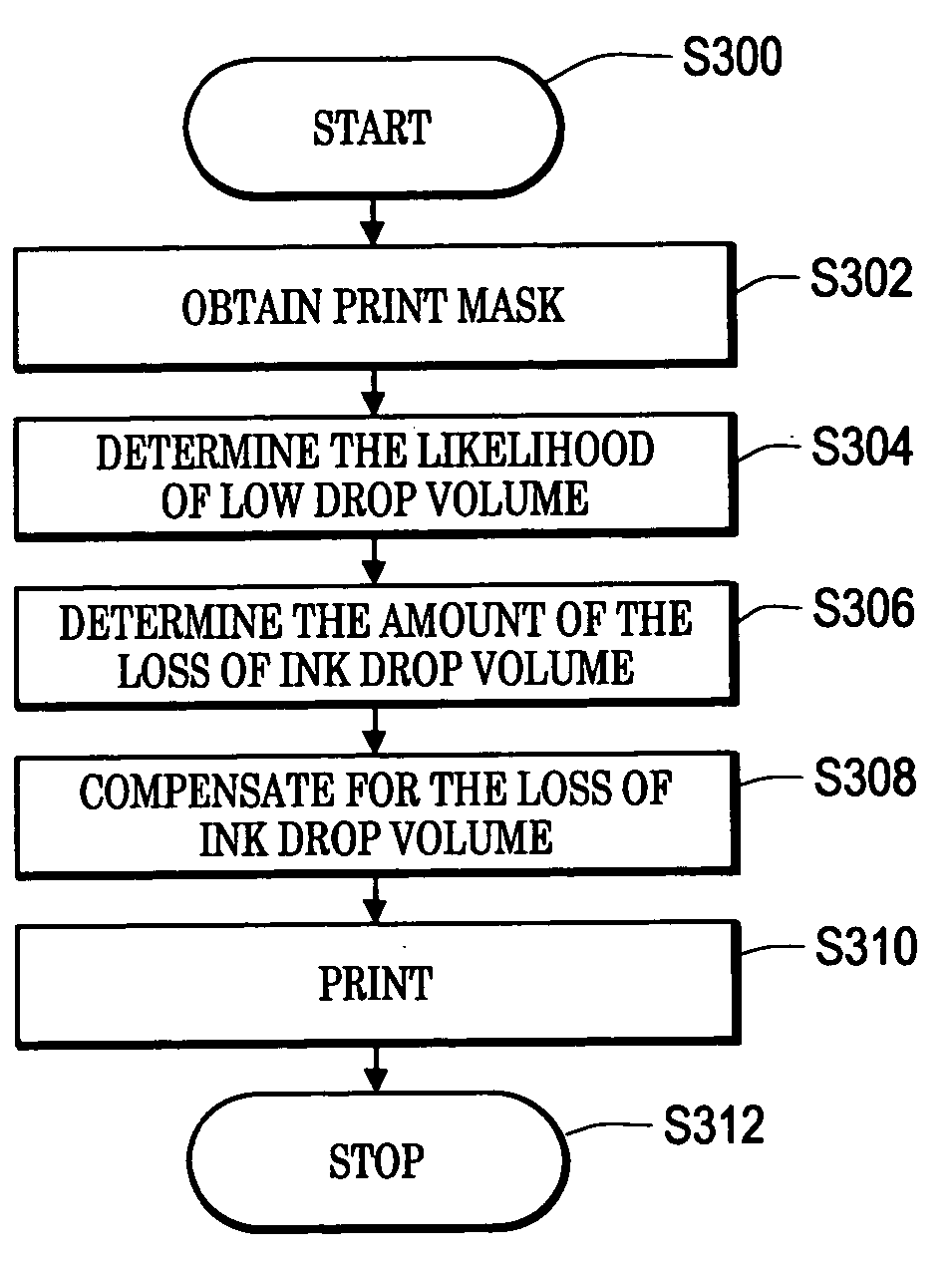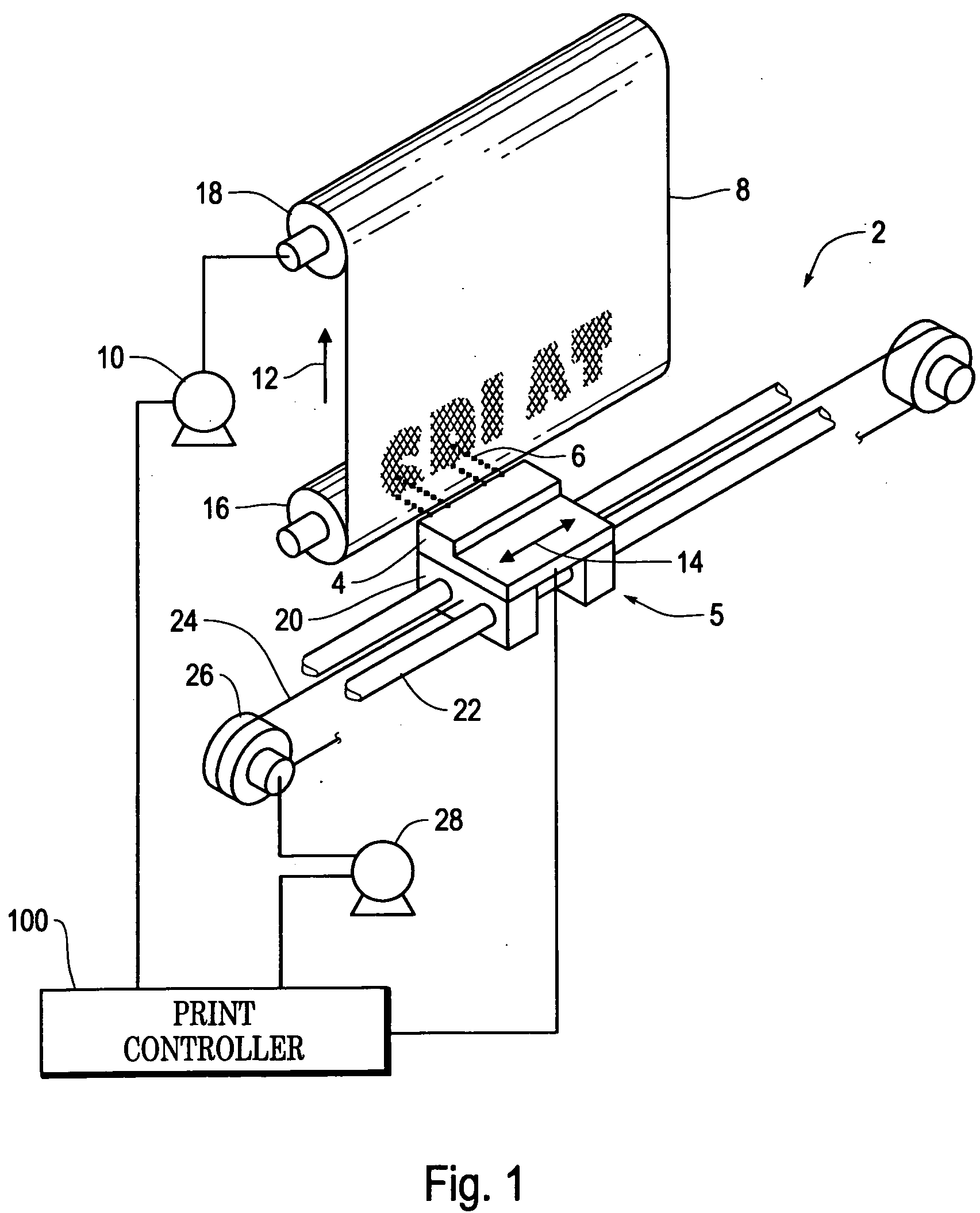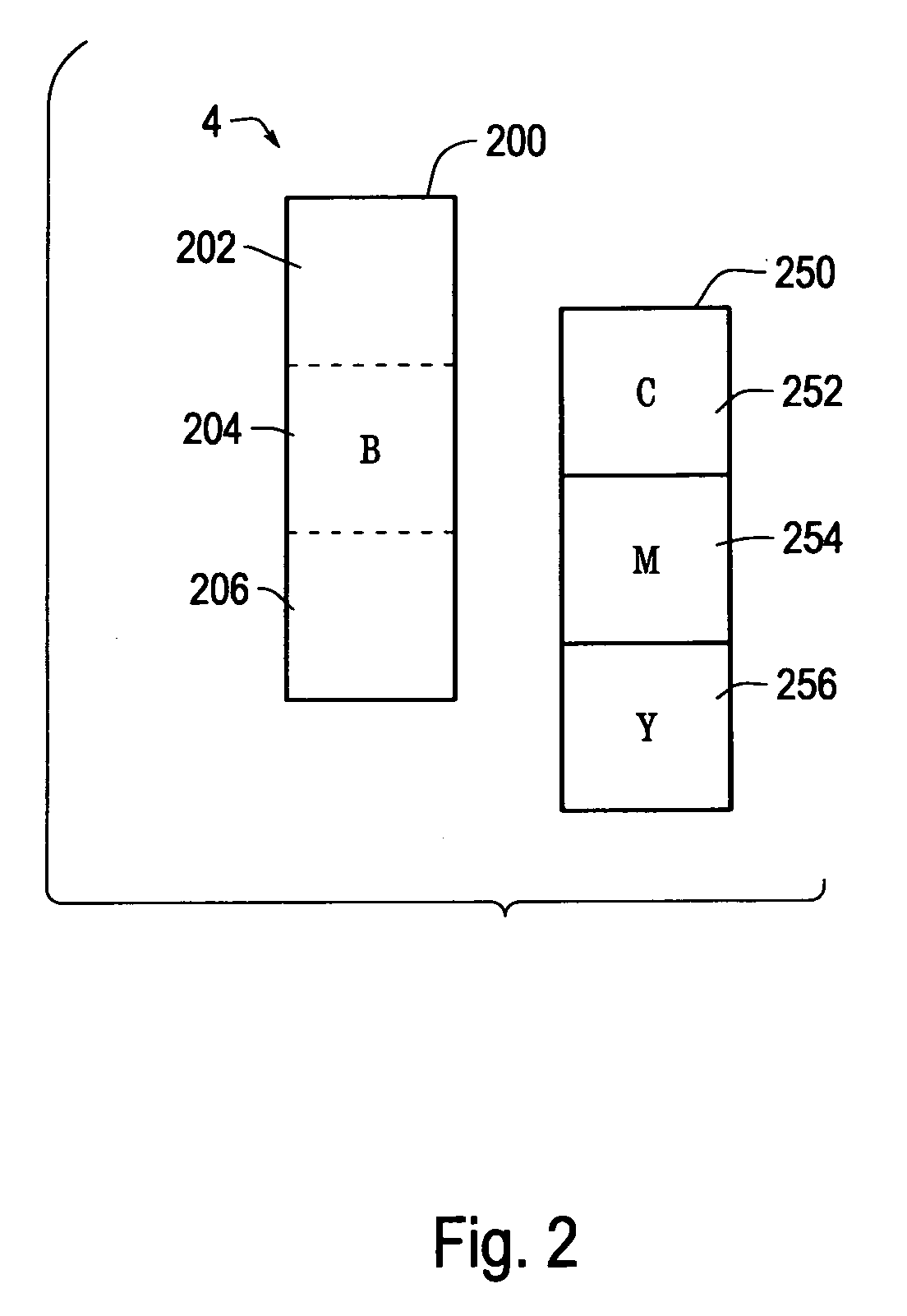Image processing to mask low drop volume defects in inkjet printers
a technology of inkjet printers and defects, applied in the field of image processing, can solve the problems of thermal inkjet print-head nozzles losing water vapor or other solvents, improper placement of ink on paper, increased ink viscosity, etc., and achieve the effect of low drop volume print defects
- Summary
- Abstract
- Description
- Claims
- Application Information
AI Technical Summary
Benefits of technology
Problems solved by technology
Method used
Image
Examples
Embodiment Construction
[0031]FIG. 1 shows an exemplary carriage-type ink jet printing device 2. A linear array of droplet-producing channels (nozzles), which may be vertically oriented as shown, is housed in a print head 4 mounted on a reciprocal carriage assembly 5. In FIG. 1, print head 4 is understood to mean any single or multiple monochrome print heads, one or more color print heads, or a combination of color and black print heads, in a specified positional relationship. For illustrative purposes, a combination of black and color heads are shown in FIG. 2. Ink droplets 6 are propelled to a recording medium 8, such as a sheet of paper, that is stepped by a motor 10 a pre-selected distance (often equal to the size of the array) in a printing direction, as indicated by arrow 12, each time the print head 4 traverses across the recording medium 8 in one of the directions indicated by arrow 14. The recording medium 8 can be provided on a supply roll 16 and stepped onto takeup roll 18 by stepper motor 10 or...
PUM
 Login to View More
Login to View More Abstract
Description
Claims
Application Information
 Login to View More
Login to View More - R&D
- Intellectual Property
- Life Sciences
- Materials
- Tech Scout
- Unparalleled Data Quality
- Higher Quality Content
- 60% Fewer Hallucinations
Browse by: Latest US Patents, China's latest patents, Technical Efficacy Thesaurus, Application Domain, Technology Topic, Popular Technical Reports.
© 2025 PatSnap. All rights reserved.Legal|Privacy policy|Modern Slavery Act Transparency Statement|Sitemap|About US| Contact US: help@patsnap.com



